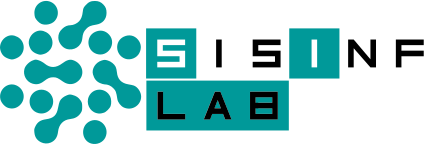Hands-on introduction to LDP-CoAP using basic code samples.
(Linked Data Platform for the Constrained Application Protocol)
Linked Data Platform 1.0 - W3C Recommendation 26 February 2015
Linked Data Platform (LDP) defines a set of rules for HTTP operations on web resources, some based on RDF, to provide an architecture for read-write Linked Data on the web.
CoAP - RFC 7252 Constrained Application Protocol
The Constrained Application Protocol (CoAP) is a specialized web transfer
protocol for constrained nodes and constrained networks in the Internet of Things. The protocol is designed
for machine-to-machine (M2M) applications.
Linked Data Platform Use Cases and Requirements - W3C Working Group Note 13 March 2014
3.12 Constrained Devices and Networks
Data coming from resource constrained devices in the Web of Things are a major driver in many domains, from smart cities to environmental monitoring to real-time tracking. The amount of information produced by these devices is growing exponentially and needs to be accessed and integrated in a systematic, standardized and cost-effective way.
IoT/WoT standards such as '6LowPAN' -IPv6 for resource-constrained devices- and the Constrained Application Protocol (CoAP), which provides a downscaled version of HTTP on top of UDP for the use on constrained devices, are already at a mature stage. The next step now is to support RESTful interfaces also on resource constrained devices, adhering to the Linked Data principles.
Due to the limited resources available, both on the device and in the network (such as bandwidth, energy, and memory), a solution based on SPARQL Update is at the current point in time considered not to be useful and/or feasible. An approach based on the HTTP-CoAP Mapping would enable constrained devices to directly participate in a Linked Data-based environment.
Support for all methods defined by Linked Data Protocol specification
Extend current HTTP-CoAP mapping [draft-ietf-core-http-mapping-07] (only implementing a subset of HTTP methods and headers)
Support for CoAP client and server implementations exploiting Californium (Cf) CoAP Framework
Lightweight RDF implementation for embedded devices
... and much more
Publications
Scientific publications about LDP-CoAP
- [Early proposal] G. Loseto, S. Ieva, F. Gramegna, M. Ruta, F. Scioscia, E. Di Sciascio. Linking the Web of Things: LDP-CoAP mapping, The 7th International Conference on Ambient Systems, Networks and Technologies (ANT 2016) / Affiliated Workshops, Volume 83, page 1182-1187 - may 2016
- [Framework description] G. Loseto, S. Ieva, F. Gramegna, M. Ruta, F. Scioscia, E. Di Sciascio. Linked Data (in low-resource) Platforms: a mapping for Constrained Application Protocol, The Semantic Web - ISWC 2016: 15th International Semantic Web Conference, Proceedings, Part II, Volume 9982, page 131--139 - oct 2016
- [Case study] M. Ruta, F. Scioscia, G. Loseto, S. Ieva, F. Gramegna, A. Pinto, E. Di Sciascio. Social Internet of Things for Domotics: a Knowledge-based Approach over LDP-CoAP, Semantic Web Journal - 2018


